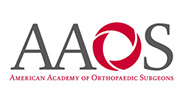What is Partial Transphyseal Surgery?
Partial transphyseal surgery is an arthroscopically assisted operative procedure to reconstruct the anterior cruciate ligament (ACL) in the knee of a child or adolescent with growth plates or physis (areas near the ends of long bones where growth is still occurring). Reconstruction of the ACL is performed using a soft tissue graft which is passed through tunnels drilled into the shinbone (tibia) and thighbone (femur) and secured to these bones. Partial transphyseal surgery is performed to minimize injury to the physis which could potentially affect growth and result in deformity. The tunnel is created such that it passes centrally through the physis of the tibia while sparing the physis of the femur.
What are the Indications for ACL Reconstruction?
Severe knee pain caused by an ACL tear or ACL injury that hinders daily activities is the major indication for ACL reconstruction. ACL reconstruction via partial transphyseal surgery may be recommended for an active child who is involved in sports or recreational activities.
The other indications include:
- Failure to improve or comply with non-operative treatment
- A recurrent feeling of knee instability during daily activities
- Repeated episodes of the knee “giving way”
- Associated meniscal tears and/or severe injuries to other knee ligaments
- Generalized laxity of the ligaments
Knee instability due to an ACL tear can lead to meniscal and cartilage injuries and early onset of arthritis, so intervention is recommended.
What are the Benefits of the Procedure?
Benefits of partial transphyseal surgery include:
- Improved knee stability
- The femoral physis which mainly contributes to limb growth is avoided thus lowering the rate of complications such as leg length discrepancy and angular deformity
- Allows return to sports following adequate rehabilitation
How is Partial Transphyseal Surgery Performed?
Hamstring tendons on the inner side of the knee (inner thigh muscle) are mostly used as a graft in partial transphyseal ACL reconstruction surgery. Two of the tendons are removed and bundled together to create a new ACL.
- The procedure is performed under general anesthesia.
- You will lie on your back for the procedure.
- Small incisions are made over the knee to insert an arthroscope and instruments.
- The torn or injured ACL is debrided.
- A small tunnel is drilled as centrally and vertically as possible through the tibial physis to minimize damage.
- Another tunnel is drilled through the femur that does not pass through the physis.
- The graft is passed through the tunnels and secured to the bone with screws.
- The incisions are closed and a dressing is applied.
- The knee may be immobilized using a brace.
What are the Risks Associated with the Procedure?
As with any surgery, partial transphyseal ACL reconstruction has its own risks including:
- Graft rupture
- Secondary lesions
- Cartilage injury
- Growth disruption from injury to the tibial physis
Recovery After Partial Transphyseal Surgery
Your doctor will prescribe medications and advise you on techniques to control pain and swelling in the initial phase of recovery. Weight-bearing and activity restrictions are recommended for about 6 weeks to allow soft-tissue healing. Gradually you will begin activities to improve range of motion followed by strengthening exercises. Those who compete in competitive sports should focus on hamstring and other strengthening exercises to decrease the risk of a re-tear. A brace is worn for support initially during the return to play.




